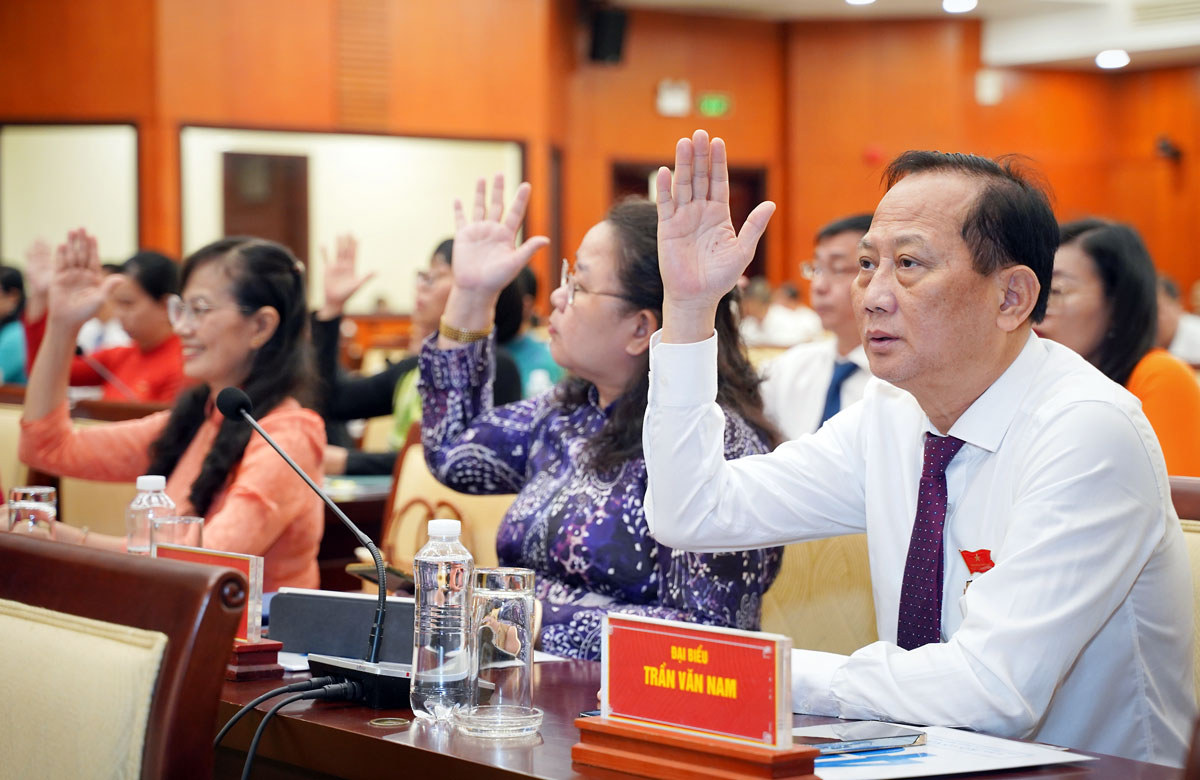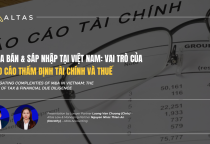The overall picture of streamlining the organizational structure and reducing staff.
Views: 602
At the National Conference on the Review of Party Organizational Work in 2024, General Secretary Mr. To Lam announced Plan 141/KH-BCDTKNQ18 on streamlining the administrative apparatus, which is likened to the country's “Second Renovation”. This is an important step to implement Resolution 18-NQ/TW on renewing, rearranging and reorganizing the political system.

The delegates of the Ho Chi Minh City People's Council unanimously approved a resolution regulating additional support for cases of leave due to workforce streamlining. Photo: Plo.vn
Objectives and Directions
-
Clearly define the functions and tasks of each steering committee: Eliminate unnecessary or overlapping and inefficient steering committees.
-
Ensure streamlined organizational structures: Reduce the number of central and local-level steering committees, reorganizing them for simplicity and avoiding overlap.
-
Enhancing operational efficiency: Retain and improve the quality of essential steering committees to meet state management tasks and socio-economic development needs.
According to the plan, relevant agencies and units must comprehensively review and propose solutions to the Government as soon as possible.
Main contents of the review
Review all current steering committees:
-
Comprehensively re-evaluate the functions and tasks of each steering committee.
-
Clearly identify steering committees that are no longer suitable for the actual situation or have low effectiveness.
-
Propose merging or dissolving committees with overlapping or redundant functions and tasks.
Criteria for restructuring
-
Retaining essential steering committees: Directly serving the implementation of important tasks of the Party and the State.
-
Streamline the number: Aim to reduce the number of existing steering committees by at least 15-20%.
-
Enhance specialization by transforming multi-field committees into specialized organizations to improve efficiency.
Implementation Timeline
According to the plan, the review and proposal of the plan to rearrange the administrative apparatus will be completed before December 31, 2024. From 2025, the implementation steps will be carried out according to the plan approved by the Government.
The Ministry of Home Affairs will lead and closely coordinate with ministries, sectors, and localities to conduct the review. Related agencies are responsible for reporting results and proposing specific solutions for consolidation by the Ministry of Home Affairs, which will submit them for approval by competent authorities.
Expected Results
After the arrangement, the structure of the Government apparatus is expected to be reorganized as follows:
-
13 ministries, 04 ministerial-level agencies (down 05 ministries). The Ministries are streamlined and consolidated as follows:
-
Merging the Ministry of Planning and Investment and the Ministry of Finance. The name of the Ministry after the arrangement is expected to be the Ministry of Finance and Development Investment or the Ministry of Economic Development.
-
Merging the Ministry of Transport and the Ministry of Construction. The name of the Ministry after the arrangement is expected to be the Ministry of Infrastructure Development or the Ministry of Transport and Urban and Rural Construction.
-
Merging the Ministry of Natural Resources and Environment and the Ministry of Agriculture and Rural Development. The name of the Ministry after the arrangement is expected to be the Ministry of Agriculture, Natural Resources and Environment.
-
Merging the Ministry of Information and Communications and the Ministry of Science and Technology. The name of the Ministry after the arrangement is expected to be the Ministry of Science, Technology and Digital Transformation or the Ministry of Science, Technology, Digital Transformation and Communications.
-
Merging the Ministry of Labor, Invalids and Social Affairs and the Ministry of Home Affairs into the Ministry of Home Affairs and Labor, and to transfer the function of state management of vocational education to the Ministry of Education and Training, and to transfer the function of state management of social protection, children, prevention and fight against social evils to the Ministry of Health.
-
04 government-affiliated agencies (reduced by 04 government-affiliated agencies). The agencies are streamlined and arranged as follows:
-
Discontinuation of the Commission for the Management of State Capital at Enterprises.
-
Discontinuation of operation of the National Financial Supervisory Commission.
-
Arrange 02 Academies of Sciences and 02 National Universities.
-
Discontinuation of operation of People's Television, National Assembly Television, Information Agency Television, VOV Television, VTC Television.
-
Integration of the Management Board of Ho Chi Minh's Mausoleum into the organizational structure of the Ministry of National Defense.
-
Integration of the Vietnam Social Insurance into the Ministry of Finance and Development Investment or the Ministry of Economic Development.
-
Reduce 12/13 general departments and equivalent (aiming to phase out the general department model within ministries and ministry-equivalent agencies); dissolve 500 departments and equivalent under ministries and general departments.
-
177 departments under ministries, ministry-equivalent agencies, and their equivalents.
The restructuring of steering committees aims to not only streamline the administrative apparatus but also renew the political system, improve the effectiveness of state management, resolve overlapping and wasteful administrative operations, and strengthen public trust while meeting the development requirements of the new era.

















![[LEGAL UPDATE] WHAT TECHNOLOGY SHOULD BE DEPLOYED BY NOTARY OFFICES FOR FULFILMENT OF PERSONAL DATA PROTECTION OBLIGATIONS? [LEGAL UPDATE] WHAT TECHNOLOGY SHOULD BE DEPLOYED BY NOTARY OFFICES FOR FULFILMENT OF PERSONAL DATA PROTECTION OBLIGATIONS?](thumbs/210x144x1/upload/news/legal-update-j-jan2025-2-5840.png)

![[LEGAL UPDATE] KEY HIGHLIGHTS OF THE NEW LAW ON NOTARIZATION 2024 [LEGAL UPDATE] KEY HIGHLIGHTS OF THE NEW LAW ON NOTARIZATION 2024](thumbs/210x144x1/upload/news/legal-update-j-jan2025-6-9279.png)
![[LEGAL UPDATE] ELECTRONIC IDENTIFICATION FOR FOREIGNERS WITHOUT TEMPORARY RESIDENCE CARDS IN VIETNAM [LEGAL UPDATE] ELECTRONIC IDENTIFICATION FOR FOREIGNERS WITHOUT TEMPORARY RESIDENCE CARDS IN VIETNAM](thumbs/210x144x1/upload/news/legal-update-j-jan2025-5-5270.png)
![[LEGAL UPDATE] TRANSITIONING TAX IDENTIFICATION NUMBERS TO PERSONAL IDENTIFICATION NUMBERS FROM JULY 1, 2025: ROADMAP AND PRACTICAL NOTES [LEGAL UPDATE] TRANSITIONING TAX IDENTIFICATION NUMBERS TO PERSONAL IDENTIFICATION NUMBERS FROM JULY 1, 2025: ROADMAP AND PRACTICAL NOTES](thumbs/210x144x1/upload/news/legal-update-j-jan2025-3-6884.png)
![[LEGAL UPDATE] CIRCULAR 03/2025/TT-NHNN - A NEW LEGAL FRAMEWORK FOR INDIRECT INVESTMENT ACCOUNT [LEGAL UPDATE] CIRCULAR 03/2025/TT-NHNN - A NEW LEGAL FRAMEWORK FOR INDIRECT INVESTMENT ACCOUNT](thumbs/210x144x1/upload/news/legal-update-j-jan2025-2-2494.png)







